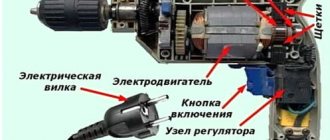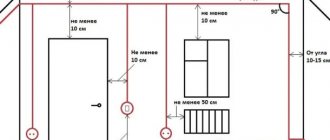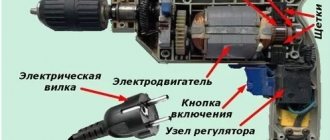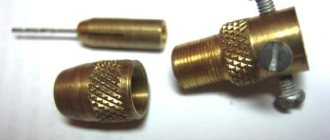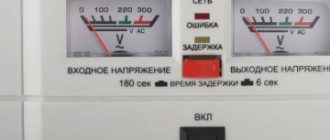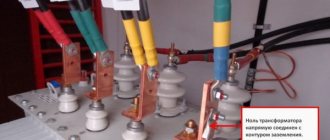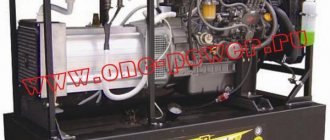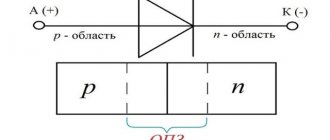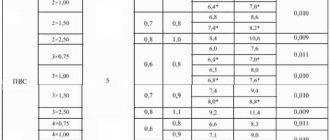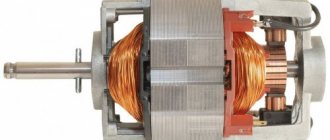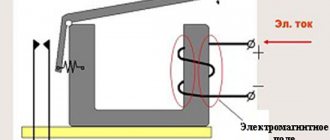If you need a drill or a hammer drill, you need to understand the difference between them absolutely clearly. The correctness of choice and the rationality of spending money depend on this. Do you need to make a couple of dozen holes, but the available hammer does not satisfy your productivity? This is a pressing problem for many. But it becomes even more challenging when you walk into a power tool store and see dozens of different models of tools. But what if you need to buy one tool - practical and universal? First of all, you need to understand the differences between an impact drill and a hammer drill.
Impact mechanism design
The difference between the functions of a drill and a hammer drill became the main difference for the creation of their impact devices. In a rotary hammer, such a mechanism is a rather complex unit, which is designed in both electro-pneumatic and electro-mechanical variations. Basically, the electro-pneumatic unit is more popular because it has better performance characteristics.
Rotational motion in electric motors is achieved through crank devices or spherically swinging bearings in piston activity with a reciprocating nature. The interram and piston space is subjected to compression types of influence, which leads to acceleration of the piston, which, through the impactor, redirects the resulting energy to the elements of the device: drills, crowns, chisels, drills.
The electric drill is equipped with a simpler impact mechanism, which consists of two ratchets. One of them is tightly fixed to the body, the other - to the rotating-moving cartridge.
When the impact mode is turned off, the ratchets do not interact with each other, since a stopper is placed between them. Turning on shock mode pushes it back. When the drill is pressed onto the surface being processed, the ratchet interacts and slippage between them is observed. Axial reciprocating activity occurs in the drilling fixture and chuck.
The difference in indicators and characteristics between a hammer drill and an impact drill lies in the structural difference between their impact mechanisms.
Rotary hammer modifications
Rotary hammers can be divided into two large groups according to the type of engine location:
- horizontal;
- vertical.
Horizontal hammer drill
Models with a horizontal engine have less weight and are inferior to “vertical” ones in all main characteristics: power, impact force. Horizontal modifications almost always contain a reverse function, and the key is rarely located in the usual place on the button. There are models where the reverse is activated by a separate key or slider on the brush assembly of the commutator, in the ventilation holes of which sparks may appear. The vertical position of the motor increases the productivity of the tool, which makes it possible to drill deep holes of large diameter.
Vertical hammer drill
There is another modification of rotary hammers - these are industrial models with an SDS-MAX chuck. Despite the name "hammer", it is actually a lightweight and compact version of a jackhammer. Such tools can be used for ordinary work; conventional drills are installed through the SDS+/SDS-MAX adapter, but they are too heavy and powerful.
What is the difference between a drill and a hammer drill in terms of functionality?
Perforating tools with full functionality have the following capabilities for performing construction work:
- with a simple blow (used as a jackhammer);
- simple rotation without shock mode;
- joint rotation and strikes.
The use of this type of equipment can manifest itself not only as a drilling tool, it has many purposes that allow it to perform other types of construction tasks. Thanks to it, it is easy to chisel walls, hollow out niches on any stone surface, chip away construction surplus, etc.
The use of an impact drill occurs exclusively as a tool that allows you to drill recesses in concrete structures.
Drill Application
Using a drill, you can make holes in building materials that do not have increased hardness. Concrete structures are difficult to crack. Drill bits wear out quickly, especially after drilling into hard materials. Using the tool for other purposes may damage the chuck. Drill repair is comparable to the cost of a new device.
By changing only the attachments, the drill is suitable for the following types of work:
- Drilling holes in various materials used in construction. If necessary, you can disable the shock function;
- Stirring construction mixtures and paints, that is, the drill is used as a mixer;
- Wrapping and unscrewing various fasteners with the impact function disabled;
- Making holes in concrete using Pobedit drills and using an impact mechanism;
- Cleaning and grinding the surface using grinding wheels or brushes as attachments;
- Making large recesses using core drills.
When purchasing this electrical equipment, its shock functions are not the main selection criterion, since it will not be possible to achieve significant results in this matter. A drill is not suitable for drilling holes by punching. This power tool is designed for short-term use in impact mode. All technical indicators of the drill indicate another purpose of the device listed above.
Expert recommendations: Before purchasing a tool, you should decide which model you need. The choice of electrical equipment depends on how much work needs to be done and how often you will use the drill. For domestic needs, a device with a power of up to 500 W is sufficient, but for construction work, give preference to a professional tool.
The difference between an impact drill and a hammer drill, taking into account performance
A distinctive feature of a perforating tool is its performance for drilling through a stone surface. The impact energy of this tool significantly exceeds that of a conventional electric drill. For a modified heavy product it reaches 20 J, for an impact drill - 1.5 J. As you can see, an electric drill has absolutely insignificant impact energy, and most of it depends on the effort applied by a person during work. With strong pressure, the impact energy will still be small, since this is affected by the weak amplitude of rotation of the drill and the height of the teeth on the ratchets.
The productivity of perforating equipment can be increased by its massiveness, which is several times higher than that of an electric impact drill with similar power indicators.
With the same power of the equipment, the deepening of the holes, which were obtained with a hammer drill, is almost 1.5 higher than this value, which was obtained with a drill. You can especially feel the difference if you drill with a crown.
How to choose a hammer drill for your home?
When checking a rotary hammer for quality of operation, you should pay attention to the fact that the noise of its operation is smooth without jumps and knocks. Turn on the device and wait until it reaches the maximum number of revolutions. Now turn it off. The speed should decrease gradually and smoothly. A sudden stop in speed is unacceptable.
There are professional and non-professional hammer drills. They vary in color. The former are correspondingly more expensive, but are also designed for a large volume and duration of work. Therefore, keep this in mind when choosing.
Look at how the device is equipped. You can save money by choosing a hammer drill with fewer accessories included in the kit. But in the end, in the future, you may need these parts and spare parts, and you will have to buy them separately, which will be more expensive.
